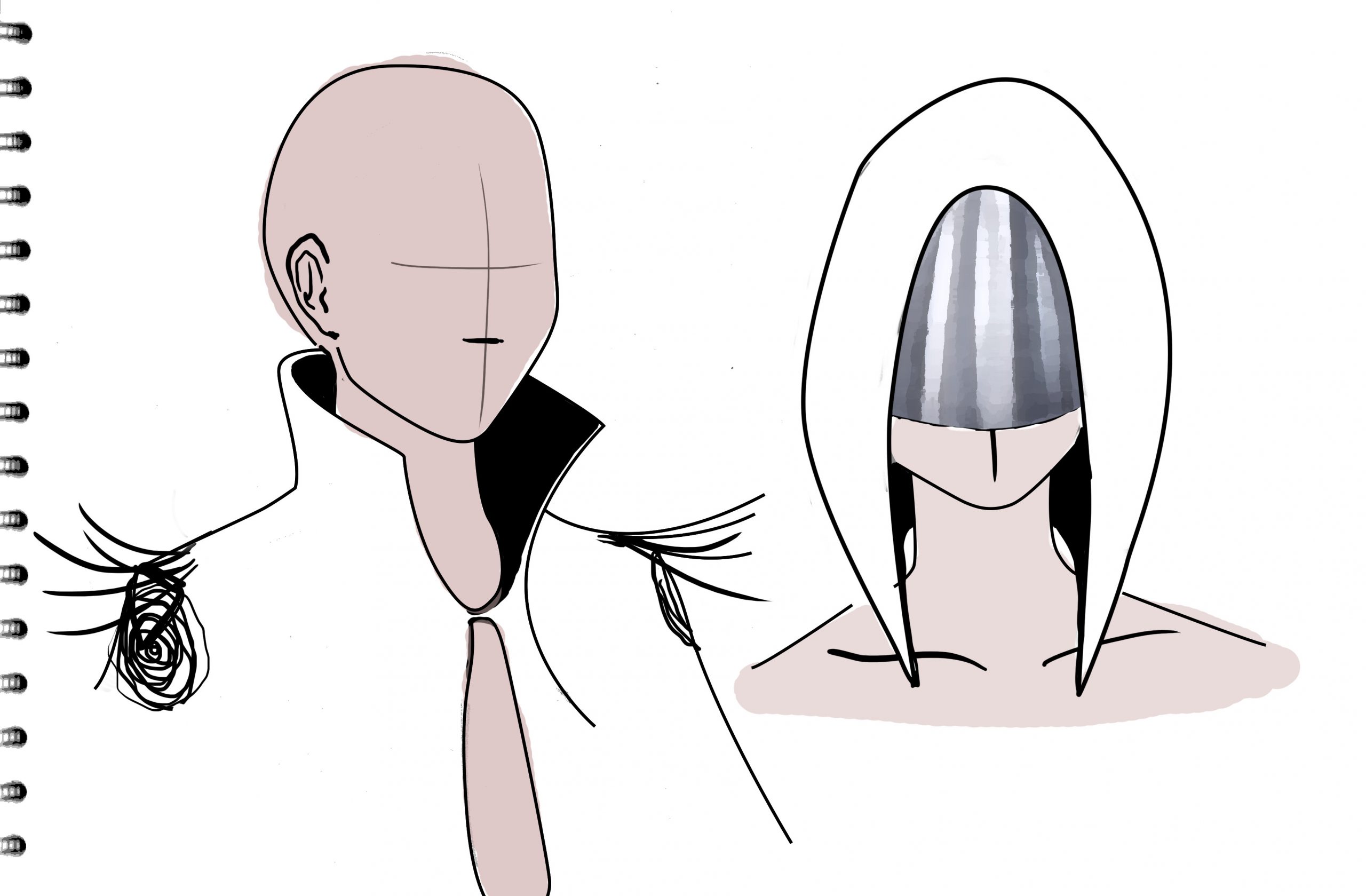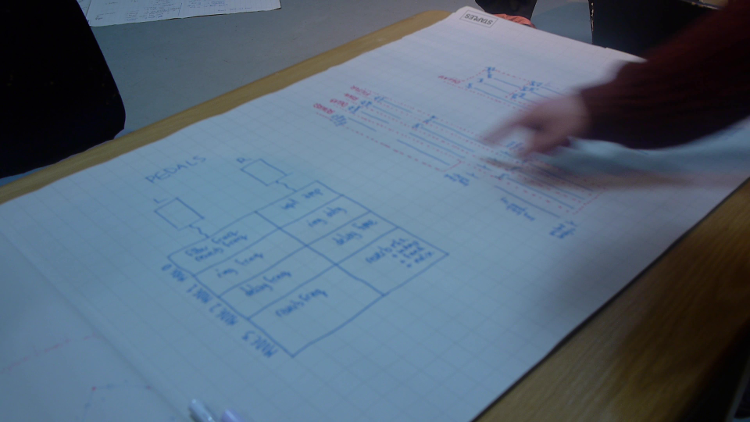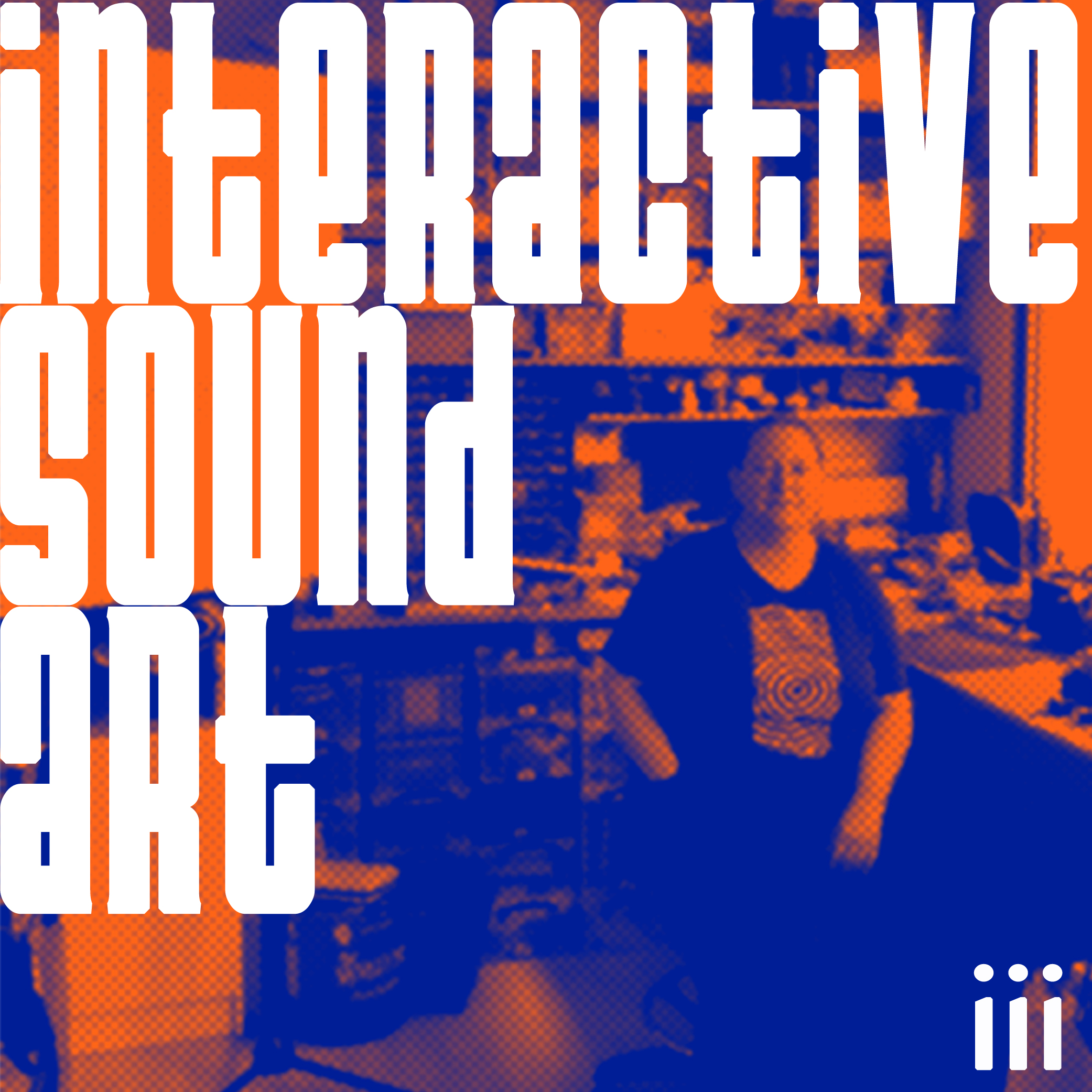Lauren Jetty in conversation with Marije Baalman, 2020
Could you Describe your practice in three words?
The three words I usually use are ‘interactive sound art’ but I’m starting to use light so maybe ‘sound art’ doesn’t cover it all anymore. I always use interactive elements, although for the past years I have been doing a research project which I’m starting to realise is a different kind of project; it’s called ‘The Malbody Centre’. I’m actually not sure if it would fit the label ‘sound art’.
Is your research Interactive?
I make use of interactive technologies and the research is definitely interactive. Arranging workshops with different groups of people to talk about different topics like touch. I have also done a lot of presentations around it but I still haven’t made it yet. This makes it a different kind of project, which makes me think I’m moving away from what I was originally doing.
When do you decide to stop the research phase and start making, or does the research become the work?
Yeah, I feel right now that the research has become the work in this project. I also took a break from it to focus on another big project which is more of a reflection; the book ‘Just A Question of Mapping’ that I’m currently writing. The book is more a reflection on how interactive works are made. So I’m looking at music, media art and dance and how interactive technologies are used in these fields. The reason it’s called ‘Just A Question of Mapping’ is because people have been using these technologies, like sensors and different computation elements, and hooking them up to outputs like sound or video or light or whatever but actually the way in which you do these things have different aesthetic techniques; so it’s having an aesthetic discussion around why you use different techniques. I think that there’s still a lot that can be developed there. A lot of the publications about it have been about the technical side and most of the more evolving aesthetic discussions stay very much on the surface of the critique details, so I’m trying to bridge that gap a little. I mean, it is also interesting that a lot of the same technologies are used in the different methods but the motivation you might have when you’re making a musical instrument is actually a very different one from when you are making an interactive media art installation. There are very different assumptions that have a lot to do with context. Approaches also have a lot to do with aesthetical aims so I think it’s good to be aware of these issues and also to realise these are different things so that you can make an informed choice about why you do things. Yeah, so that’s briefly what the book is, I’m about halfway writing.
Is there a looming deadline for the book?
The original deadline was the end of the year but next week I have a discussion with the publisher to see if we can push it back a little, knowing that the publisher is also funded for the next four years so it should be possible.

The Malbody Centre, Sketch for speculative protheses by Giulia Principe
How do you find working with interactive art in a time like this? When there’s been distancing and different regulations?
For me I was already working on the book so actually it hasn’t made too much difference, although I was doing a tour in Norway to try and test material and workshops and presentations so I had to break that off but otherwise my plan was to sit inside and write anyway! So it’s like OK I have to do this! The only thing that is sort of limiting is that I was imagining maybe going to some place for a writing residency, so I could really hide from people who might know I was at home!
Has that maybe happened slightly anyway with the regulations?
Well no, there were quite a few other things that had to be done like the iii application, and then also readjusting for all of the things we had to do differently for events so there was actually quite a bit of work.

illustration of the book Mapping my Mapping (work in progress)
How do you balance your workload? (the iii financing and your personal practice?)
It’s been a little bit difficult as the recent application was such a big one but I think now for the coming years it will be easier as it’s more clear and we don’t need to make big applications again until 2023. So now it will be more executing the plan and just doing it. I also think I’ve learnt a lot about how to think for and do applications so it should be easier from now on.
Do you have a background in finance before this or has it been a learning curve?
It’s been a bit of a learning curve but I did have some experience. I studied applied physics so we did have some topics like business economics so there’s a little bit of that in the background. In that course I also learnt how to deal with spreadsheets!
Was that at TU Delft?
Yeah. So working with numbers, doing spreadsheets are also a way of coding which I’ve been doing for a long time now. In that sense it’s not too much of a ‘job’ but the other aspect is the thinking and understanding how different funds want to see things. I’ve also been reading up a lot on the fair practice codes which is one thing that motivates me; how can people get paid fairly. When I worked at STEIM I was involved in a big European project (METABODY) so I learnt a lot there. At STEIM, I found there was overall not a lot of transparency about the financial budget so that experience really made clear to me that transparency is something that I really value. Because otherwise there’s this weird hierarchy. Just to have the opportunity for autonomy or taking decisions or planning a project, if you don’t have transparency then how does that come about? So working with iii more on my way out of STEIM became very important.
When did you actually join iii?
I did a residency in 2016 and then I joined after that, which was also the year I stopped working at STEIM.
Have you seen iii or The Hague in general change at all? Or do you see it moving in a particular direction?
In a way; I lived in The Hague in the past between 1996 – 2002 and then I was out of The Netherlands for 8 years, occasionally visiting The Hague. I studied Sonology 2001-2002 and then I left right after. I was also still finishing my Master at Delft in that same year, so just because of time I wasn’t completely involved in the art scene yet. And then I moved to Berlin and got involved there. So when I came back to The Netherlands I thought it had all changed a little bit overall. Politically I feel it’s moved a bit more to the right.
The rest of the world also!
The rest of the world also but I guess it was a bit more apparent because it was less gradual as an experience. I was 8 years outside of The Netherlands and began to build up a bit of an artistic career but also I was still in academia, although moving more and more to the artistic side with that. So then I came back at a completely different stage of my life; trying to get out of academia and build up my own artistic career, just settling as a self employed person.
When did you realise that you wanted to have a career within the arts?
I had done a PhD and a PostDoc and I thought I could stay in academia but what am I going to teach people? What can I offer? I mean sure I have a lot of knowledge but I don’t know what it is to be an artist; it doesn’t make sense to educate people to be an artist when I don’t know what that means outside of the academic world. I felt that if I were to do this then I would really need the practical experience as opposed to just academic. The university level art hadn’t really been very present in The Netherlands in early 2000s, that’s now slowly coming but it wasn’t a possibility before. So I spent 5 years at STEIM which helped me develop quite a big network within The Netherlands as well as expanding my international network.
What do you think the benefits are to an organisation like iii?
I think the peer network is important; having people that understand what you’re doing or can give you feedback on what you are doing, being able to do joint projects, organise your own events or join others in what they are doing; that’s been really great. Establishing a community, doing things you can’t do on your own. It’s important to have an artist driven thing instead of having one person with one vision.
Do you have any memories of first experiencing ‘art’?
Hmm, that’s a good question. My first experience of making art was writing stories, before I could really write! I also started playing music, playing the piano, I started the piano at about 7 or 8. I was always making things though. Designing things, making origami, I had lots of books about how to make different things with paper, calligraphy… Not so much drawing but making things. I also participated in a youth art concourse (called Kunstbende, 13-18) with some of my short stories, I got to the final around 3 times but never won it!
Were your parents musical?
Not so much. Basically my parents gave the opportunity to do some basic music training; playing the recorder and learning how to read notes. My brother had also done this and he wanted to learn the piano so then we had a piano at home so I started playing and my parents said that maybe I should get lessons to learn it ‘properly’. In the end, I wasn’t really into rehearsing and playing sheet music a lot but I liked improvising and creating my own stuff. Like the writing it was something I did all the time.
Did you have groups you would improvise with?
No, it was mostly a solo improvisational thing. To give some musical context I grew up in a small village so everyone else was playing something that worked in groups, a lot more marching band style that fitted the local tradition; trumpets, horns, drums so piano didn’t really fit in there.

Mapping my Mapping work session at iii
Is storytelling something you still think about in your practice now?
With ‘The Malbody Centre’ I’ve also been doing some writing again. I think for a long time my storytelling was fulfilled with doing LARP stuff (live action role-playing), which is also making up your own stories. ‘The Malbody Centre’ I’m playing with fictional elements so it’s also part of it, exploring storytelling in different ways as well as writing. I also think that interactive installations can still benefit a lot more from storytelling; from having a narrative of some sort.
Do you have any events coming up?
I have one work session coming up around the book called ‘Mapping my Mapping’, so I work with six artists to document projects they’ve made, describe them, analyse them; how they are built and why, what decisions were taken and why. So that’s coming up in August. It goes hand in hand with my writing and research on the book; as that expands so do the different ways in which I do these sessions and then each session contributes back into it again. A win-win situation really! From the last session I had some really good feedback from people, ranging from ‘it’s good to have a way to talk about this with other people’, to people needing help with PhDs or thesis work and figuring out how to write about this stuff. It also helps people to develop their work further as it helps to give a better view or a more structured view on what they are doing. Finding this language to talk about stuff, contextualising what they are doing. There was one artist who was describing a project around a musical instrument but he was coming from a visual art background. During the work session he realised that he needed to go back to the first version when it was an installation and expose the interesting things that can be done with that medium, rather than wanting to perform music with a certain instrument. There are very different ways of starting or initiating work which also has an influence on how you contextualise it.
